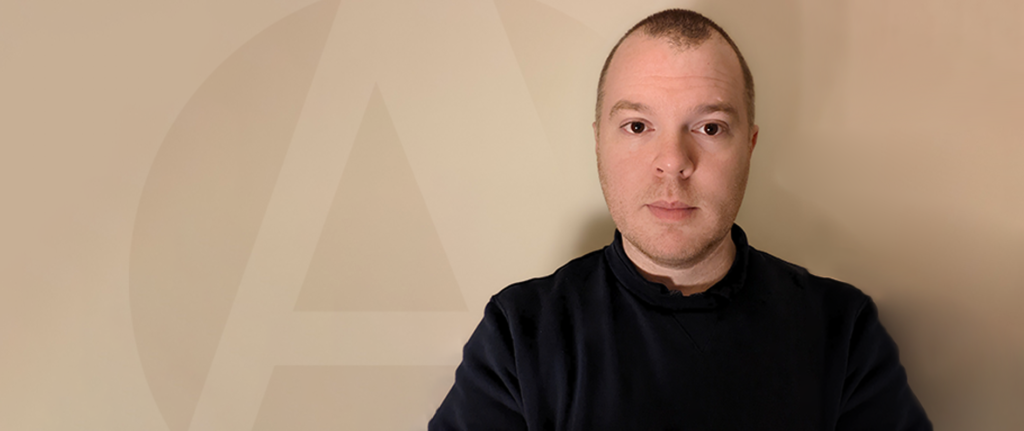
Natural Language Generation (NLG) is one of the most fascinating and fast-moving areas of Artificial Intelligence, and the team at Arria is leading the way when it comes to new uses for the technology. To get a handle on where NLG is headed, we spoke with Alasdair Logan, Head of Technology Development at Arria.
Tell us about the current Arria NLG technology.
Studio is our flagship product, which allows users to build NLG projects. End users build projects using their structured data which is then analyzed and interpreted to produce an insightful summary. Studio has multiple deployment models, authentication options, a GUI-based development environment, and a programming language we created (plus much more), so it is an exciting but complex challenge for us to build, maintain and deploy.
What are the coming changes at Arria?
One of my main focuses, in addition to the day-to-day running of the Studio team, is looking ahead to the future. We strategize about what NLG products and systems will look like in the future. There are so many interesting ideas and opportunities that it can be quite daunting when trying to narrow it down, but exciting too!
How do you see the future of NLG?
I see increasingly more low code, off the shelf, often domain-specific solutions becoming available, especially in the short term. In the longer term, I really think we will see the NLG development tools becoming a lot smarter and often supported by machine learning techniques at various stages in the development pipeline. This could be in the form of helping writers craft better texts as the tool provides suggested improvements to their output text. Or, the technology has QA tools, where every single variation is automatically reviewed and checked for correct meaning, a job that takes too much time for a human to do now.
Are there any Tech Trends to be aware of?
We have an R and D team who are always keeping an eye on the latest trends and building demos and proof of concepts to highlight the latest goings-on in the industry. We are extremely excited to see how things they produce, like language models, for example, can be applied in real-world environments and used in our tech stack.
What sectors or jobs can benefit from NLG in the future?’
Any sector or job that deals with massive amounts of data that people are struggling to understand and make use to make decisions, which covers most business sectors. Financial data such as profit and loss, operating expenses, investment reporting, and many other use cases are successful now but there is still a lot to tap into. Data-driven journalism and sports journalism have been successful using NLG, as well as clinical studies reporting in the pharma domain. We are also getting traction in the chatbot and conversational AI space which is an enormous space if you consider technologies like Alexa, Siri, etc.
Looking forward, explainable AI could be interesting. The more we have massively complex machine learning algorithms that make decisions which humans don’t really understand, the more we will want a written understanding of what those decisions mean. For example, if an ML algorithm is used to deny someone a bank loan, a written summary explaining exactly how the decision was made could be important for both the bank and the customer.
In the future, we may see improvements for real-time decision-making support where it is important to make decisions quickly. Perhaps helping sports teams make on-field decisions, like in Formula 1, NBA, NFL, or Premiership football. Or assisting financial analysts to make trades where timing is critical. Or informing operators on an oil platform of an urgent issue that could impact the equipment they are monitoring.
What interests you most about Arria NLG technology?
I really enjoy it when we see NLG applied successfully in different domains, and we see the impact it can have on customers’ businesses.
In Oil & Gas, for example, a client initially tried to build an NLG system themselves without success. The audience (offshore operators) could tell the output was written by a computer and therefore did not necessarily trust or follow the advice. Their thinking was, “How can a computer tell me what to do!” After we built a solution with them, using a voice they trusted, they started getting much better responses which they put down to the quality of the output text – it read as if a human had written it.
What are your favorite books or resources?
At the beginning of my career, I was lent a book called Natural Language Understanding by James Allen, which gave me a lot of the basics of grammar syntax, and I recommend it to newcomers to NLG.
As my role has changed in my career, I have started picking up more product and management books. A couple that I have read recently are both by the same author Nir Eyal: Hooked and Indistractable.
What attracted you to the field of NLG?
This was my first job after finishing University. I completed an undergraduate degree in computer science and then a postgrad at Aberdeen University, where I met Dr. Yaji Sripada (our Chief Scientist and one of the founders of the company). After graduating I found out Arria was looking for developers, so I applied. I did not know much about NLG at the time and my main motivation was getting a graduate job. I must have liked it as I have ended up sticking around for over 10 years now, which is a lot in the start-up world!
I started as a software developer and went on from there to senior to lead and then to Head of Technology Development.
As a language company, we believe that words have a ‘spirit,’ and everyone is encouraged to choose a meaningful word; what is your word?
Dedication, for me it means committing and working as hard as you can to get things done, which is what I have been trying to do for the last 10 years or so!



